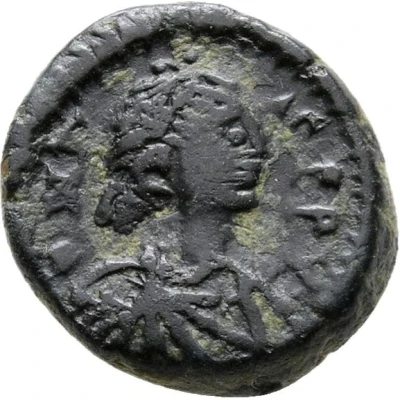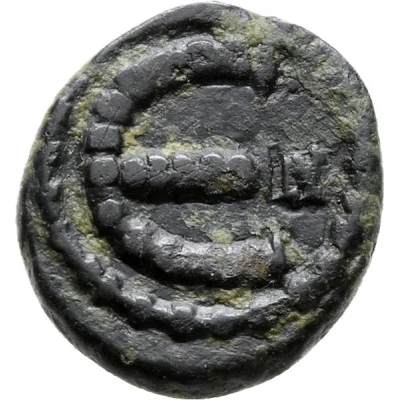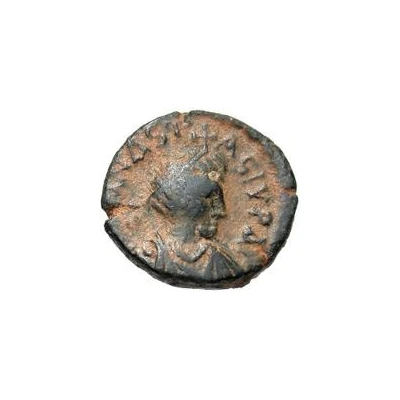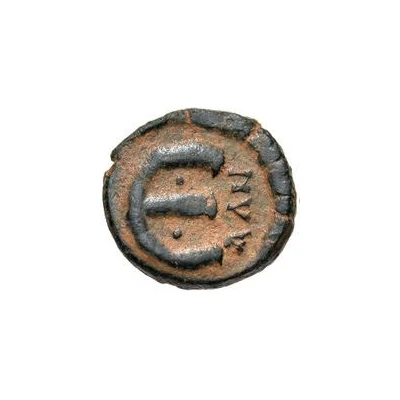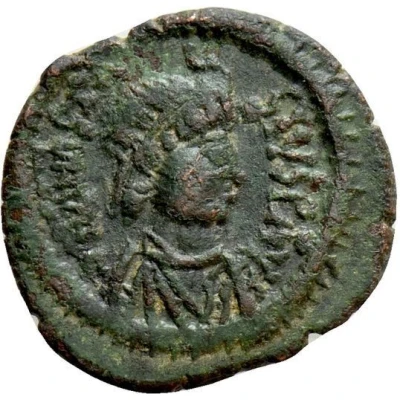
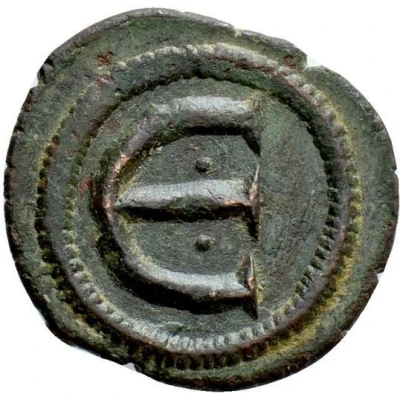

5 Nummi - Anastasius I Dicorus Constantinopolis, Second Large Module Emission, No Officina Letter ND
| Copper | 2.27 g | 14 mm |
| Issuer | Byzantine Empire (Byzantine states) |
|---|---|
| Emperor | Anastasius I Dicorus (491-518) |
| Type | Standard circulation coin |
| Years | 517-518 |
| Value | Pentanummium = 5 Nummi (1⁄1440) |
| Currency | First Solidus Nomisma (498-720) |
| Composition | Copper |
| Weight | 2.27 g |
| Diameter | 14 mm |
| Shape | Round (irregular) |
| Technique | Hammered |
| Orientation | Variable alignment ↺ |
| Demonetized | Yes |
| Updated | 2024-10-04 |
| Numista | N#297527 |
|---|---|
| Rarity index | 100% |
Reverse
Large Є containing two pellets.
Script: Greek
Lettering: Є
Translation: 5
Comment
Second reform large module coinage. From the second primary emission (517-518) denoted by pellets.
The second primary emission began with the new indictional cycle on the 1st of September 517 and ended with the death of Anastasius on the 9th of July 518.
The pentanummia of the second reform were struck to a theoretical weight standard of 2.27g or 1/144th of a Roman pound.
Legend varieties exist, but are all based on the base form of “D N ANASTASIVS PP AVG”
The rare issuing lacking an officina letter is a product of the fifth officina. In order to not confuse the people, instead of having two “Є”s, the fifth workshop decided not to place a second one, meaning the denominational mark also serves as the officina letter.
Interesting fact
One interesting fact about this coin is that it was issued during the reign of Anastasius I Dicorus, who was the Byzantine Emperor from 518 to 527 AD. During his reign, he implemented several reforms, including the introduction of a new currency system, which replaced the old system of nummi with a new coin called the solidus. This coin, the 5 nummi, was part of that new currency system and was used widely throughout the Byzantine Empire.
